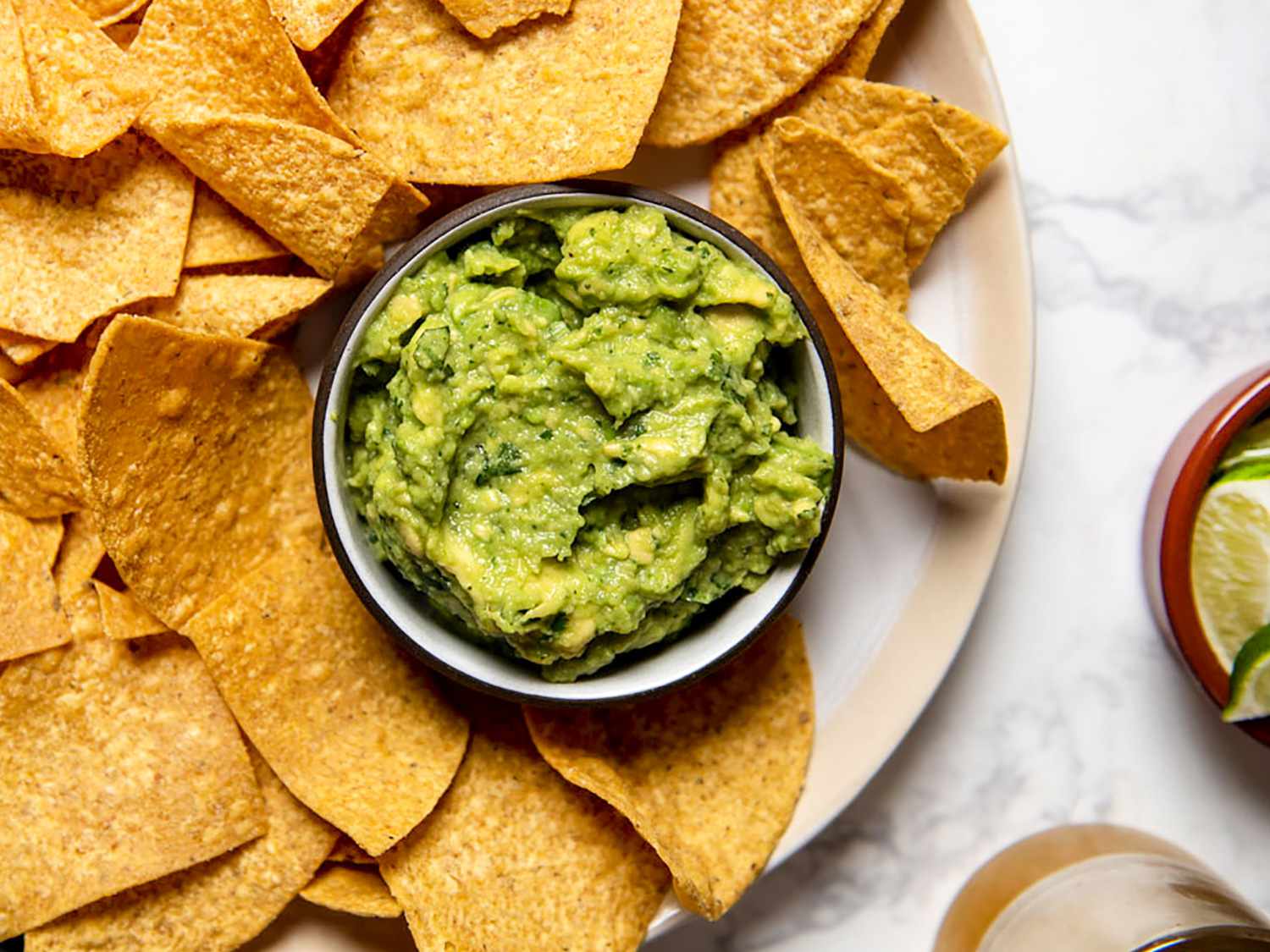Guacamole: History, Regional Variations, and Perfect Recipe Tips
Guacamole’s roots trace back to Mesoamerica, where the Aztecs created a similar avocado-based sauce called “ahuacamolli.” Combining the Nahuatl words “ahuacatl” (avocado) and “molli” (sauce), the dish was a staple in their diet. Avocados, rich in essential nutrients, were revered, and their inclusion in guacamole provided a flavorful nutrient boost.
Evolution Over the Centuries
Guacamole evolved considerably from its original form. After the Spanish conquest in the 16th century, the recipe spread beyond Mesoamerica. The Spaniards added new ingredients like onions, cilantro, and lime juice, which popularized the dish across different cultures. Today, guacamole variations include ingredients like tomatoes, garlic, and peppers, reflecting regional tastes and culinary innovations.
Ensure to insert the previous context and next sections seamlessly to maintain a coherent flow throughout your article on guacamole.
Essential Ingredients of Traditional Guacamole
Avocados: The Core Component
Avocados form the foundation of traditional guacamole. High-quality Hass avocados are preferred due to their creamy texture and rich flavor. Ensure the avocados are ripe; they should yield slightly when pressed but not feel mushy. When selecting avocados, look for dark, pebbly skin to ascertain ripeness. If avocados are too firm, allow them to ripen at room temperature for a few days. Ripe avocados not only contribute to the creamy consistency but also provide essential nutrients like vitamins K, C, E, and B6, folate, and potassium.
Additional Flavor Enhancers
Several ingredients enhance the flavor of guacamole, balancing the richness of avocados. Lime juice adds brightness and prevents oxidation, helping maintain the dip’s vibrant green color. Freshly squeezed lime juice is optimal for authenticity and better taste. Onions, commonly red or white, contribute crunchiness and a slight pungency. In traditional recipes, diced red onions enhance the dish visually and add sharpness.
Cilantro, another vital component, offers a fresh, citrusy note that complements the avocados. Incorporate chopped fresh cilantro for authenticity. Tomatoes provide a juicy, slightly acidic counterpoint; choose firm Roma tomatoes for better texture and minimal seeds. Garlic introduces aromatic depth, enriching the overall profile of the guacamole. Use minced fresh garlic for an authentic impact. Additionally, salt is essential to bring out other flavors, making the guacamole more vibrant.
To add heat, incorporate jalapeños. Finely diced jalapeños give a controlled level of spiciness. For less heat, remove the seeds and veins from the peppers. Experimenting with these flavor enhancers can help you craft a guacamole that suits your taste while maintaining its traditional roots.
Variations of Guacamole
Regional Twists
Explore how guacamole adopts local flavors across different regions. In Mexico, variations might include pomegranate seeds in the south. In the Yucatán, the use of habanero peppers adds a fiery kick. Northern regions often incorporate grilled or charred vegetables into the mix.
Central American countries, such as Guatemala, frequently mix in ingredients like hard-boiled eggs or local herbs. Caribbean versions may include fruits like mango for sweetness. Each region brings unique ingredients, showcasing the flexibility of guacamole.
Modern Interpretations
Modern chefs and home cooks experiment constantly with guacamole. Swap traditional tomatoes for roasted corn or bell peppers. For a health-focused version, add nutritional powerhouses like kale or chia seeds.
Innovative versions can include bacon for a smoky flavor or Greek yogurt to achieve a creamier texture. A popular twist is to serve guacamole with non-traditional dippers like sweet potato chips or jicama sticks.
These variations maintain the essence of guacamole while introducing exciting new flavors and textures, making it a versatile dish that continues to evolve.
Nutritional Benefits of Guacamole
Healthy Fats and Nutrients
Guacamole contains essential healthy fats and nutrients. Avocados, the primary ingredient, provide monounsaturated fats, which can improve heart health by reducing bad cholesterol levels. A 100-gram serving of avocado offers approximately 15 grams of healthy fats, vital for energy and cell function. Avocados also contain vitamins E, K, C, and B-6 and minerals like potassium and magnesium. Vitamin E acts as an antioxidant, protecting cells from damage, while potassium helps maintain fluid balance and nerve function. Fiber content in avocados supports digestion, with almost 7 grams of fiber per 100 grams, which is 27% of the recommended daily intake.
Dietary Considerations
Guacamole fits various dietary preferences. It’s naturally gluten-free, making it suitable for those with gluten intolerance or celiac disease. The low carbohydrate content, approximately 9 grams per 100 grams, is advantageous for low-carb and keto diets. Vegans and vegetarians can enjoy guacamole without modification, as it’s plant-based and free of animal products. Additionally, those following a paleo diet can incorporate guacamole, given its reliance on whole, unprocessed ingredients. If you aim to reduce sodium intake, consider making fresh guacamole at home, where you can control salt levels.
Making the Perfect Guacamole
Choosing the Right Avocados
Ripe avocados define the quality of your guacamole. Look for Hass avocados with dark green to black skin and a slightly bumpy texture. When gently squeezed, they should yield to pressure without being mushy. Avoid avocados with brown spots or overly soft areas as they indicate overripeness.
Check the stem for freshness. Remove the tiny stem piece; if the flesh underneath is green, the avocado is ready to use. Use underripe avocados within a few days by placing them in a brown paper bag with an apple or banana to speed up ripening.
Expert Tips for Preparation
Start by slicing the avocados lengthwise and removing the pits. Scoop out the flesh and place it in a mixing bowl. Mash with a fork for a chunky texture or use a potato masher for a smoother consistency.
Add 2 tablespoons of freshly squeezed lime juice to prevent browning and enhance flavor. Finely chop 1/4 cup of onions and 1-2 jalapeños, then mix them in. Include 1/4 cup of chopped cilantro for freshness. Season with 1/2 teaspoon of salt and adjust as needed. Optional ingredients like diced tomatoes or garlic can add extra depth.
Refrigerate for 30 minutes to develop flavors or serve immediately to enjoy the freshness. Store in an airtight container, pressing plastic wrap over the surface to minimize air contact. This helps retain the vibrant green color.
Conclusion
Guacamole isn’t just a simple dip; it’s a versatile and nutritious addition to any meal. By understanding its rich history and experimenting with regional variations, you can create a unique version that suits your taste. Remember to use ripe Hass avocados and follow expert tips to ensure your guacamole stays fresh and delicious. Whether you’re enjoying it as a snack or a side dish, guacamole offers a delightful blend of flavors and health benefits. So go ahead, get creative, and make guacamole a staple in your kitchen.






